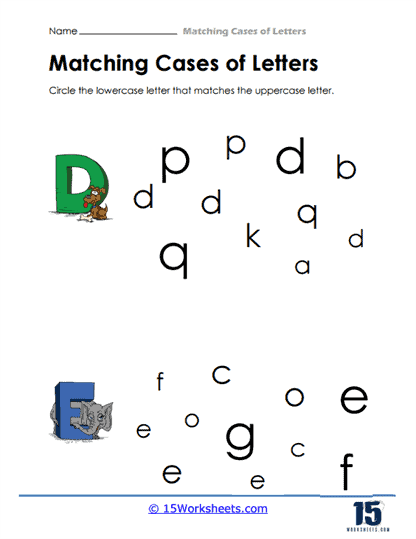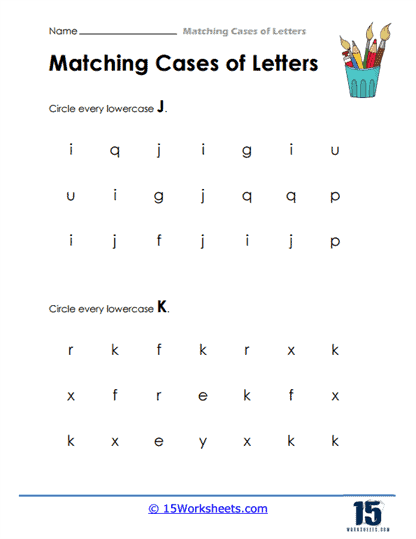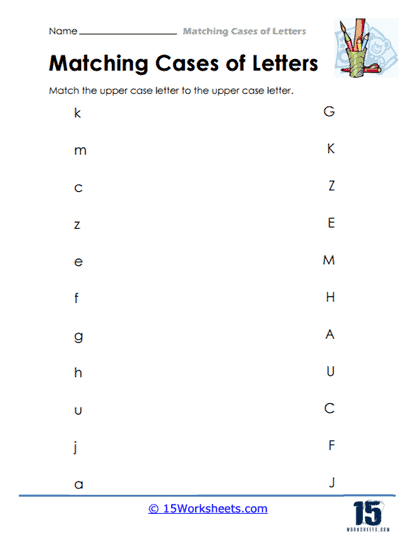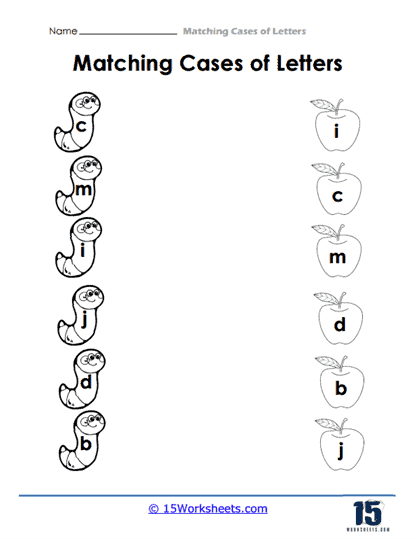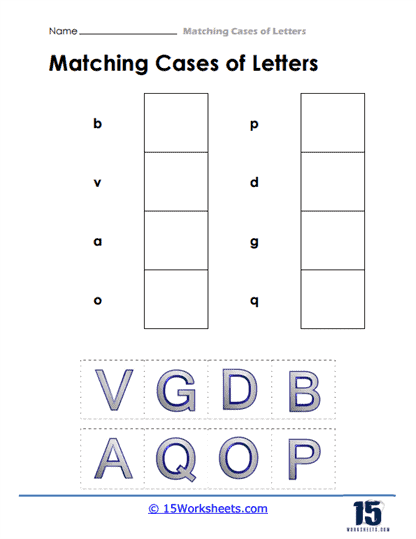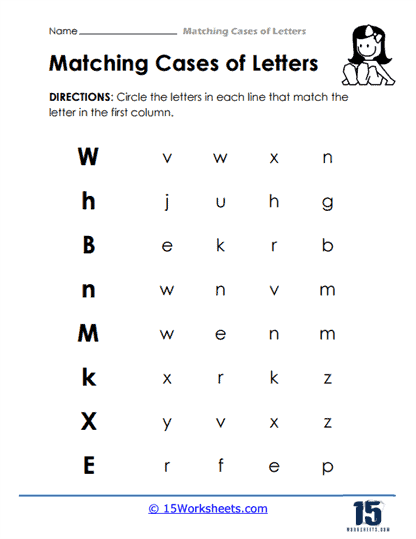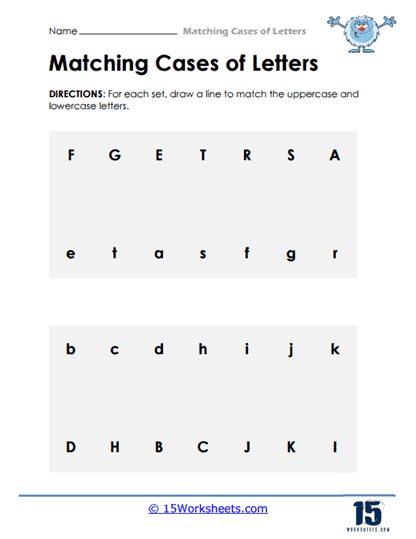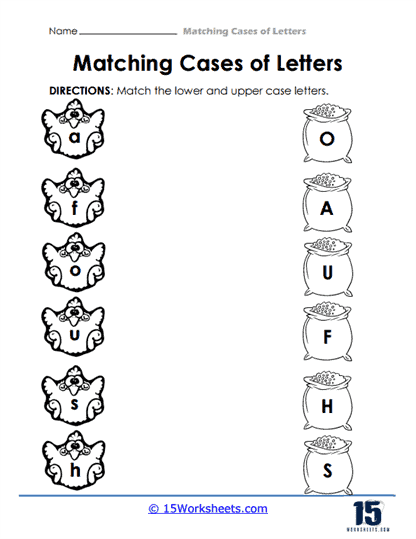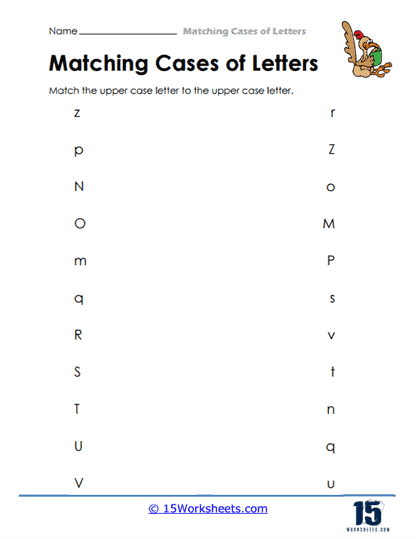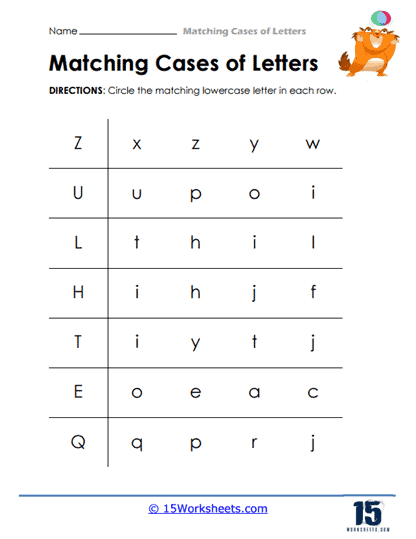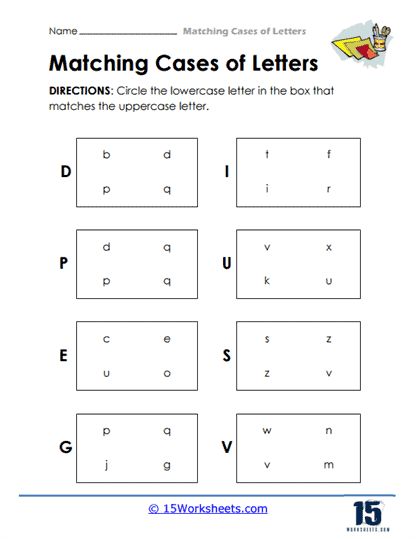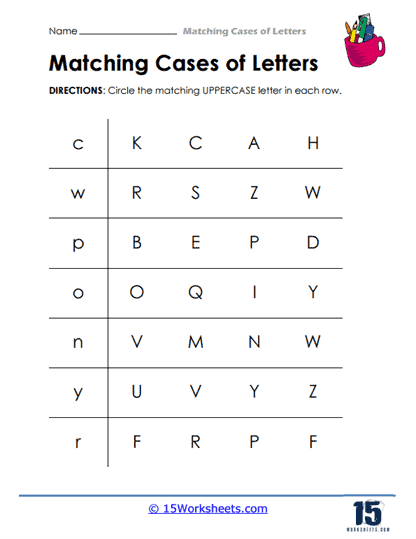Matching Cases of Letters Worksheets
About These 15 Worksheets
These sheets focus specifically on helping children recognize and match uppercase and lowercase letters. These worksheets aim to reinforce the understanding that each uppercase letter has a corresponding lowercase form and vice versa. The purpose is to develop proficiency in recognizing and differentiating between uppercase and lowercase letters. There are a number of different formats these worksheets take on including:
Layout Sheets – The worksheet usually consists of two sets of letters arranged in a grid or table format. One set includes uppercase letters (e.g., A, B, C) and the other set includes their corresponding lowercase counterparts (e.g., a, b, c). The letters are typically organized in alphabetical order. The child’s task is to match the uppercase and lowercase letters by drawing a line or connecting them in some way. The child must identify the uppercase letter in one set and find its matching lowercase letter in the other set.
Corresponding Process – The child starts by selecting an uppercase letter from the first set. They then search for the parallel lowercase letter in the second set. Once they find the match, they connect the two letters or mark them in some way to indicate they are a pair.
Why Are There Uppercase and Lowercase Letters?
The distinction between uppercase and lowercase letters can be traced back to the early development of written language. Uppercase letters, also known as capital letters, were initially used in ancient inscriptions and manuscripts for titles, headings, or the beginnings of sentences. Lowercase letters gradually evolved as a more efficient and practical form for everyday writing.
Uppercase and lowercase letters have distinct visual characteristics that allow for easier differentiation. Uppercase letters are generally larger, have more elaborate forms, and often have greater visual impact. Lowercase letters, on the other hand, are smaller, simpler, and more compact. This visual contrast aids in readability and helps distinguish between different elements of text.
Uppercase letters are primarily used to mark the beginnings of sentences or proper nouns (names of specific people, places, or things). Starting a sentence with an uppercase letter helps indicate the beginning of a new idea or thought. Proper nouns are capitalized to distinguish them from common nouns and to give them emphasis or importance.
Uppercase letters are commonly used in titles, headings, and subheadings to make them stand out and draw attention. This practice helps structure written content and allows readers to quickly identify key sections or topics. They are often used to represent acronyms (abbreviations pronounced as words) and initialisms (abbreviations pronounced letter-by-letter). For example, NASA (National Aeronautics and Space Administration) is an acronym, while FBI (Federal Bureau of Investigation) is an initialism. Using uppercase letters for such abbreviations helps distinguish them from regular words.


